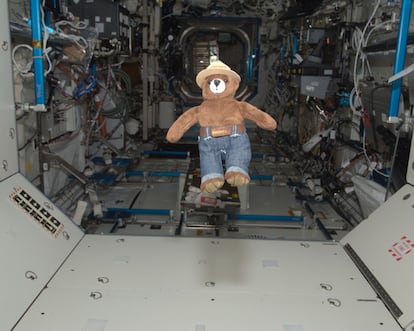How to avoid a sneeze that could carry life all the way to Mars
Planetary protection protocols aim to protect the rest of our Solar System from being contaminated by terrestrial life forms

A single human sneeze can disperse about a million microbes – simple, living organisms that can only be seen through microscopes. Normally, they don’t travel very far – from our mouths to a handkerchief. However, when we don’t have time to cover our sneezes, these microbes can end up on a colleague’s desk or the bald head of the guy sitting in front of us on the bus. There is also a remote possibility that they can make an incredible (but feasible) journey to the remote surfaces of Mars or Europa (Jupiter’s moon). And if they haven’t already, they could get there before humans do. They would just have to be lucky enough to live in the mouth of, say, an aeronautical engineer on a space mission.
We’ve learned many new things about microbes. We now know that organisms known as extremophiles can survive in conditions intolerable or even lethal for most forms of life. Years of astrobiology research have shown how terrestrial microorganisms can survive the harsh conditions of outer space, withstanding extreme temperatures, continuous hits by micrometeorites and the high levels of radiation present beyond our atmosphere. Scientists have tortured these little critters in experiments to see how much they can endure (the poor tardigrades can survive almost anything except maybe a collision with the Moon). Microbial resistance to conditions in outer space can teach us much about the potential for life beyond Earth, knowledge that is useful for future space exploration.
The first rockets into space and the Apollo 16 mission showed that bacterial spores could survive deep space conditions. Later experiments corroborated this capacity to survive for long periods: NASA’s Long Duration Exposure Facility (LDEF) found some that survived up to one year and ESA’s EUropean REtrievable CArrier (EURECA) found some that survived six years. The viability of several desiccation- and radiation-tolerant microbes in Mars-like conditions was tested in ESA’s EXPOSE experiment in the European Technology Exposure Facility (EuTEF) outside the International Space Station (ISS). The microbes reactivated upon returning to Earth, proving their ability to resurrect, so to speak, and implying they can self-repair accumulated DNA damage.
The question at hand is that if these microorganisms can stay alive in space, then they could contaminate other celestial bodies. And given the right conditions on the surface of another planet, they could also resurrect and proliferate. Preventing this is one of the main reasons planetary protection protocols have been developed through an international organization called the Committee on Space Research (COSPAR).
Almost every nation with an active space program has signed a treaty that establishes contamination protocols based on a mission’s destination (to Mars, the Moon, an asteroid and back to Earth) and activities (a flyby, orbit or surface landing). The protocols also seek to prevent contamination of our planet by a biological specimen from beyond.
Every mission traveling to a body in our solar system is assigned a risk level of one to five, with five being the highest risk. For example, current standards permit 300,000 microbes on a mission to Mars under the assumption that they will be biologically inert upon arrival. But far fewer particles are allowed in missions to certain parts of Mars. To put these numbers in perspective, an unfiltered room contains one billion particles per cubic meter of air. The clean rooms on spacecraft have less than 100,000 particles (0.1 microns or larger) per cubic meter of air.
The aim of planetary protection protocols is to mitigate (complete elimination is very difficult) the risk of spreading terrestrial life forms throughout the Solar System. Imagine the crushing debacle of journeying millions and millions of miles to another celestial body only to find a life form brought from home.
Eva Villaver is is a researcher at the Astrobiology Center, part of Spain’s National Research Council and the National Institute of Aerospace Technology (CAB/CSIC-INTA)
Tu suscripción se está usando en otro dispositivo
¿Quieres añadir otro usuario a tu suscripción?
Si continúas leyendo en este dispositivo, no se podrá leer en el otro.
FlechaTu suscripción se está usando en otro dispositivo y solo puedes acceder a EL PAÍS desde un dispositivo a la vez.
Si quieres compartir tu cuenta, cambia tu suscripción a la modalidad Premium, así podrás añadir otro usuario. Cada uno accederá con su propia cuenta de email, lo que os permitirá personalizar vuestra experiencia en EL PAÍS.
¿Tienes una suscripción de empresa? Accede aquí para contratar más cuentas.
En el caso de no saber quién está usando tu cuenta, te recomendamos cambiar tu contraseña aquí.
Si decides continuar compartiendo tu cuenta, este mensaje se mostrará en tu dispositivo y en el de la otra persona que está usando tu cuenta de forma indefinida, afectando a tu experiencia de lectura. Puedes consultar aquí los términos y condiciones de la suscripción digital.
More information
Archived In
Últimas noticias
‘Fallout’ or how the world’s largest company turned an anti-capitalist apocalyptic Western into a phenomenon
From inflation to defending migrants: Eileen Higgins and Zohran Mamdani inaugurate the new Democratic resistance against Trump
EU’s prestige at stake with proposal to fund Ukrainian war effort with Russian assets
Mustafa Suleyman: ‘Controlling AI is the challenge of our time’
Most viewed
- ‘El Limones’ and the growing union disguise of Mexican organized crime
- Christian Louboutin: ‘Young people don’t want to be like their parents. And if their parents wear sneakers, they’re going to look for something else’
- ‘We are dying’: Cuba sinks into a health crisis amid medicine shortages and misdiagnosis
- The low-cost creative revolution: How technology is making art accessible to everyone
- A mountaineer, accused of manslaughter for the death of his partner during a climb: He silenced his phone and refused a helicopter rescue










































